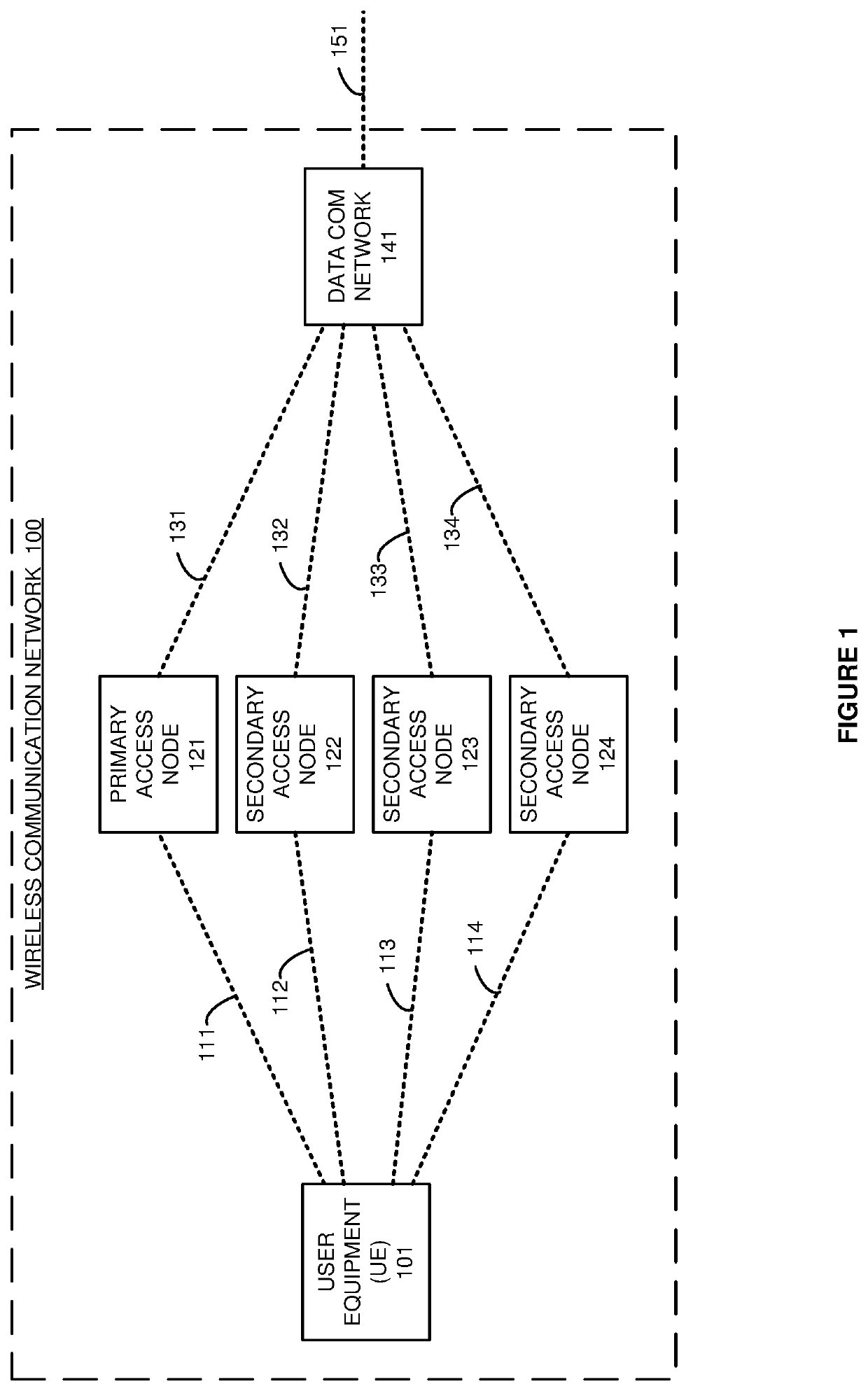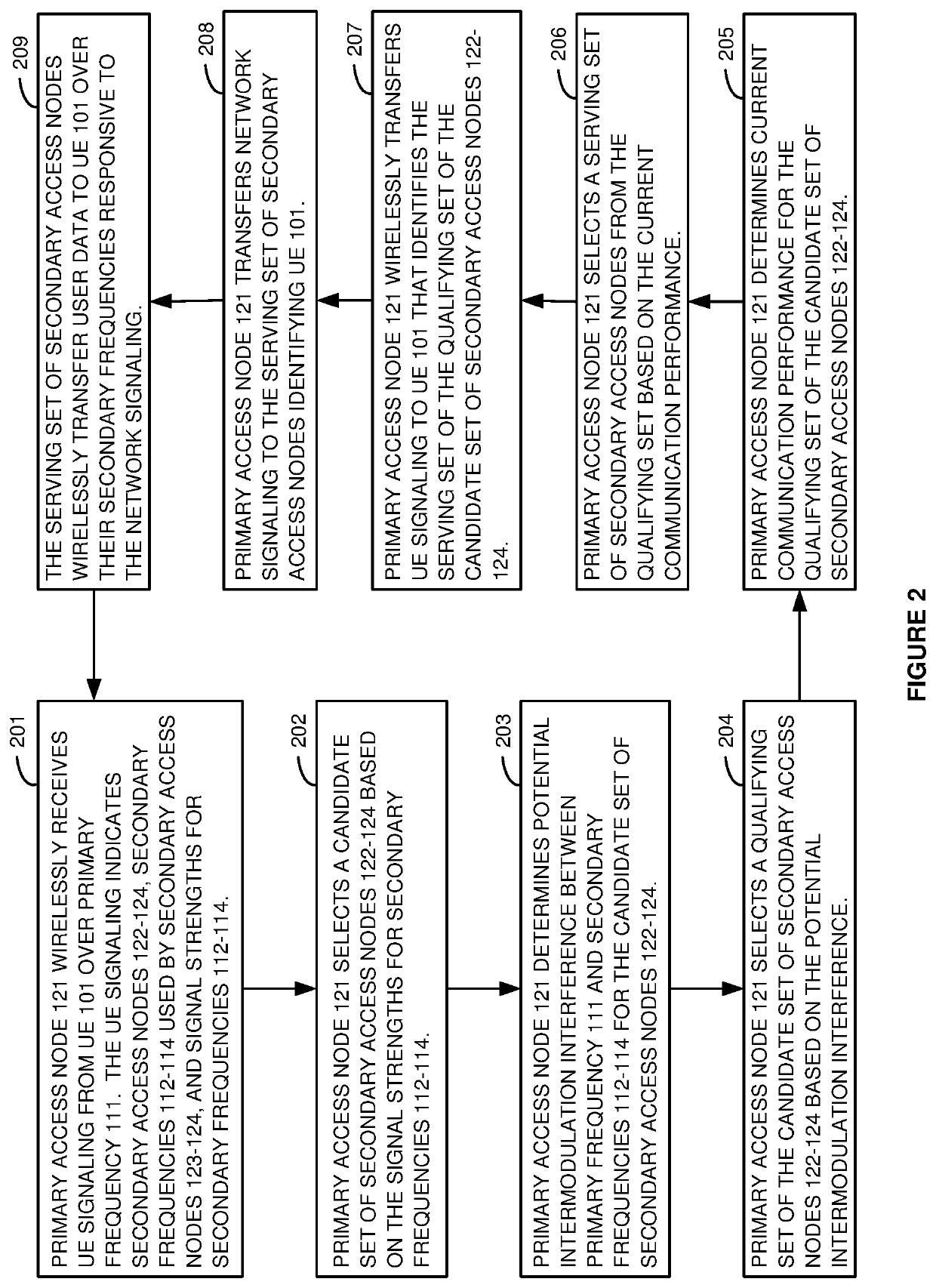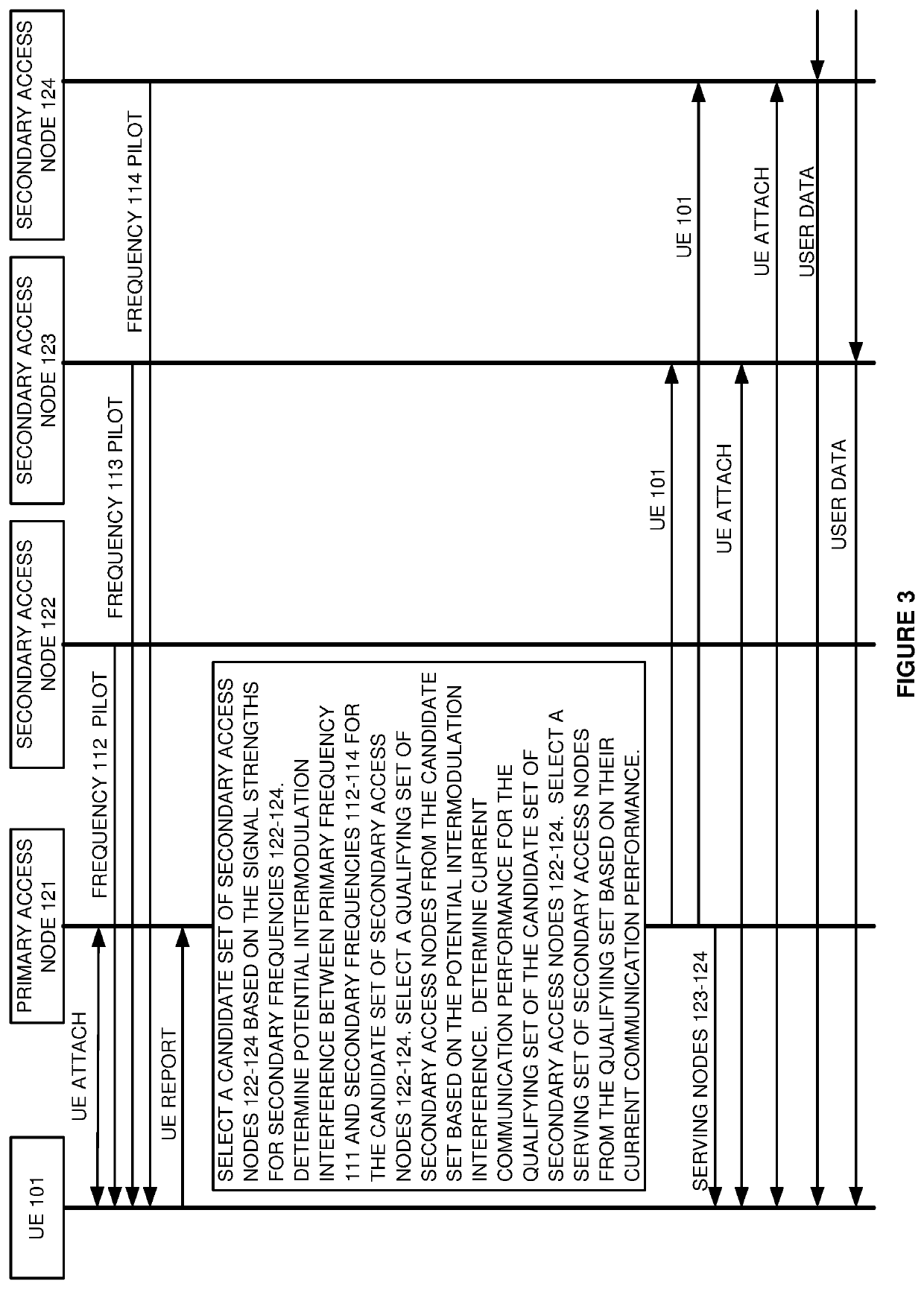Multi-frequency data communication service over multiple wireless access nodes
a wireless access node and data communication technology, applied in the direction of color television details, color television signals processing, electrical equipment, etc., can solve the problems of interference with legitimate radio frequencies, non-linearity of shared antenna circuitry, and ineffective mitigation of wireless access nodes
- Summary
- Abstract
- Description
- Claims
- Application Information
AI Technical Summary
Benefits of technology
Problems solved by technology
Method used
Image
Examples
Embodiment Construction
[0012]FIG. 1 illustrates wireless communication network 100 that serves User Equipment (UE) 101 with a multi-frequency data communication service over multiple wireless access nodes 121-124. Wireless communication network 100 supports wireless data services like internet-access, media-streaming, messaging, machine-control, machine-communications, and / or some other wireless data product. Wireless communication network 100 comprises UE 101, primary access node 121, secondary access nodes 122-124, and data com network 141.
[0013]UE 101 and primary access node 121 are coupled over primary frequency 111. UE 101 and secondary access node 122 are coupled over secondary frequency 112. UE 101 and secondary access node 123 are coupled over secondary frequency 113. UE 101 and secondary access node 124 are coupled over secondary frequency 114. Primary and secondary frequencies 111-114 reside in the low-band, mid-band, high-band, or some other part or the wireless electromagnetic spectrum. Primar...
PUM
 Login to View More
Login to View More Abstract
Description
Claims
Application Information
 Login to View More
Login to View More - R&D
- Intellectual Property
- Life Sciences
- Materials
- Tech Scout
- Unparalleled Data Quality
- Higher Quality Content
- 60% Fewer Hallucinations
Browse by: Latest US Patents, China's latest patents, Technical Efficacy Thesaurus, Application Domain, Technology Topic, Popular Technical Reports.
© 2025 PatSnap. All rights reserved.Legal|Privacy policy|Modern Slavery Act Transparency Statement|Sitemap|About US| Contact US: help@patsnap.com



